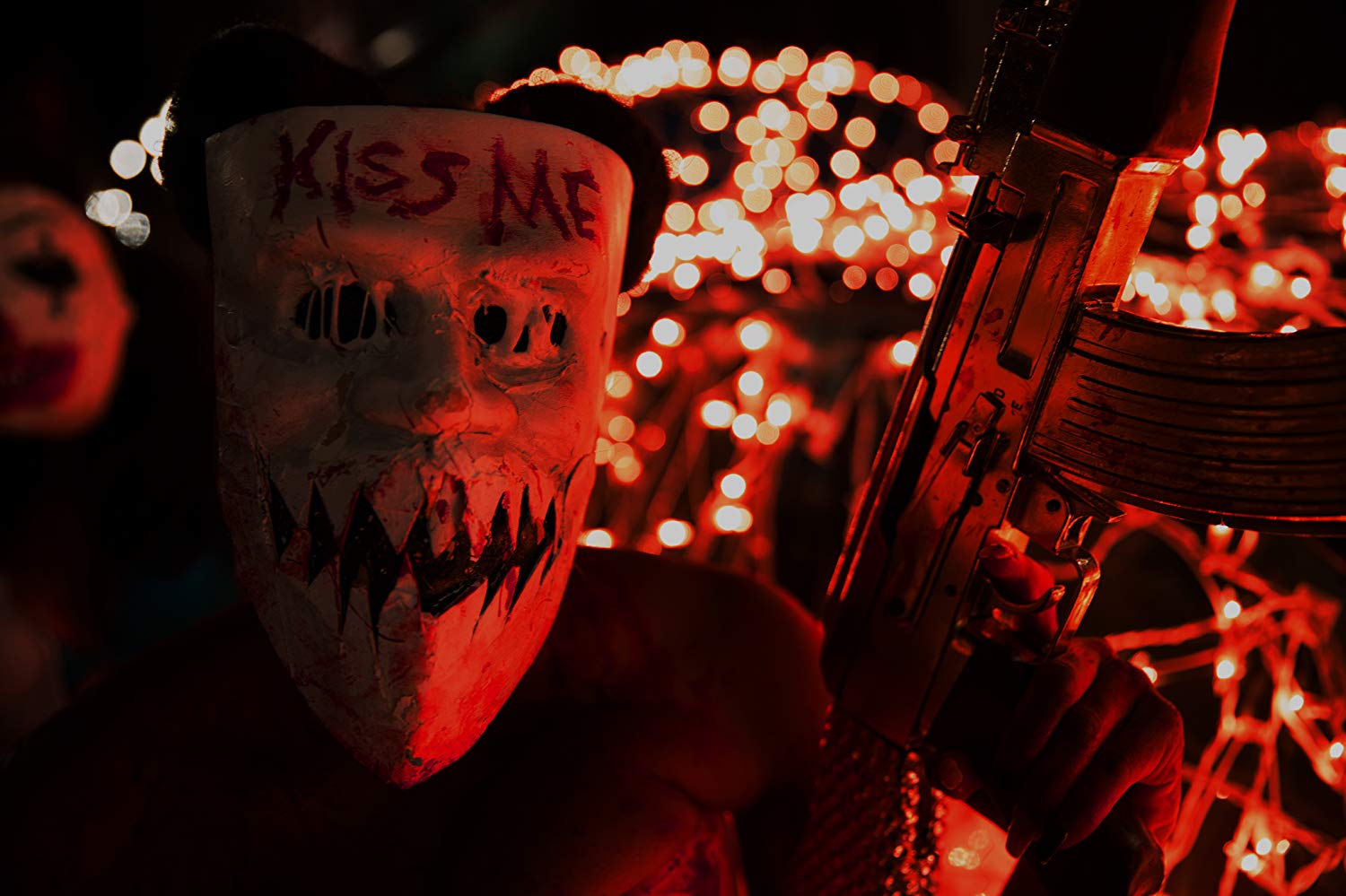
Photo by Michele K. Short - © 2016 - Universal Pictures
The world wouldn’t be complete if there weren’t conspiracy theories running amok. Overanalyzing, zooming in on paused screens, and stringing together similar dialogue are just a few of the reasons why I love the cinema. Not only does it bring people together for their pure love or hatred of a film, but it also allows audience members to debate theories just reading between the lines. Sometimes directors and/or writers don’t spell out what exactly happened in their works and that’s ok. If everything was laid out for us we wouldn’t have conversations about their works in the first place. Even when they do let us know everything, sometimes we can’t help but be suspicious of just how everything went down in the first place. Spoilers are ahead, so read at your own caution.
1) Danny Masterminded
Everything in The Shining
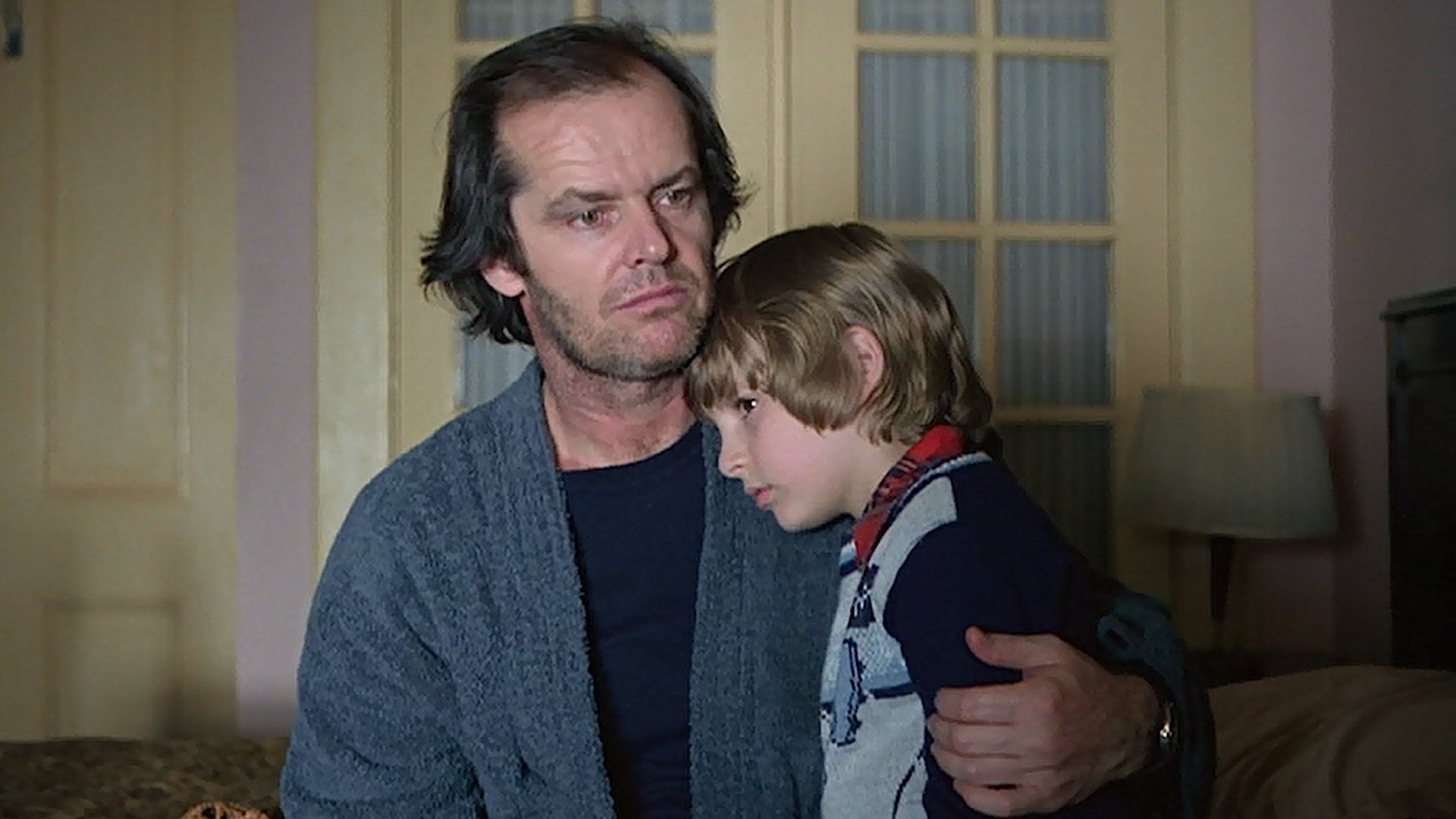
Photo © 1980 – All rights reserved. Courtesy Warner Bros. Home Entertainment, Inc.
There are a dozen or so theories about The Shining; starting when a promotional video, made years after the director’s death, purported to show Stanley Kubrick confess to helping NASA fake the Moon landing. Specific to The Shining, the documentary Room 237 tackles all the bizarre theories of what the film actually means. However, one of the craziest theories has to be that little Danny Torrance planned all the carnage in the first place.
Let’s break it down. Per a conversation between Danny’s doctor (Anne Jackson) and his mother Wendy (Shelley Duvall), it is revealed that Danny (Danny Lloyd) went through a traumatic event that could have cause his imaginary friend “Tony” to appear. Tony is a little boy who lives in Danny’s mouth and when he feels threatened he hides in his stomach. Right, ’cause that isn’t a sign of psychosis or anything… When discussing this situation, it is revealed that Danny’s father Jack (Jack Nicholson) “accidently” dislocated Danny’s arm. Wendy assures the doctor that it was an accident and Jack hadn’t had a drink since. Sure, it sounds like a drunken accident until we fast forward a few months later when the Torrance family is at the Overlook Hotel and Jack’s sanity is slipping. He talks to a bartender that isn’t there (theoried to be the Devil but that is for another time!) and furiously discusses the “accident.” Jack tells Lloyd, “It was three god damn years ago.” …Wait? Three years? What happened to five months?

Either Wendy cannot comprehend the concept of time correctly or the only incident she knows about happened five months ago—suggesting Jack had been abusing his son for quite some time and the arm yanking was the first physical injury. It seems as though Jack got clean and didn’t lay a hand on his son afterwards but the trauma is still there. If you rewatch the scene when Danny goes to get his fire truck, you’ll see Danny almost pulls away when his father puts his arm around him. This trauma visibly surges through Danny which prompts him to ask, “You wouldn’t hurt us would you, Daddy?”
“You wouldn’t hurt us would you, Daddy?”
One argument to support this is that Danny asks his father the question out loud but, as he stares straight ahead, he is actually psychically commanding Jack, “You can’t hurt us.” If you notice throughout the film, Jack doesn’t hurt them (not physically) except for a bathroom door and the unfortunate Dick Halloran (Scatman Crothers). Danny knew that Dick was aware of his powers and when the news broke out that Jack died under unusual circumstances, Dick would be the first and only person to look at Danny. Which would explain why—if he saw the horrors happening at the Overlook Hotel via “shining”—Dick didn’t tell the police when he called the station to ask for a sidewinder up the mountain. This leads one to believe that when Danny uses the image of “Grady” to warn Jack that he is on his way to stop him, Danny is actually setting Dick up to be the scapegoat.
With his ability to shine Danny could very easily have planted the hallucinations of the “ghosts” in his father’s head to drive him insane. Such would be, his alter ego Tony calling all of the shots. As Tony tells Danny when he sees the little girls, “They are just pictures.” Danny could have easily overheard hotel workers discussing the murder of Grady (Philip Stone) and his family, which he could have used to implement his plan to force Jack to lose his mind.
Pretty dark and twisted.
—
2) Pennywise (IT) and Killer Bob (Twin Peaks)
are the same evil entity
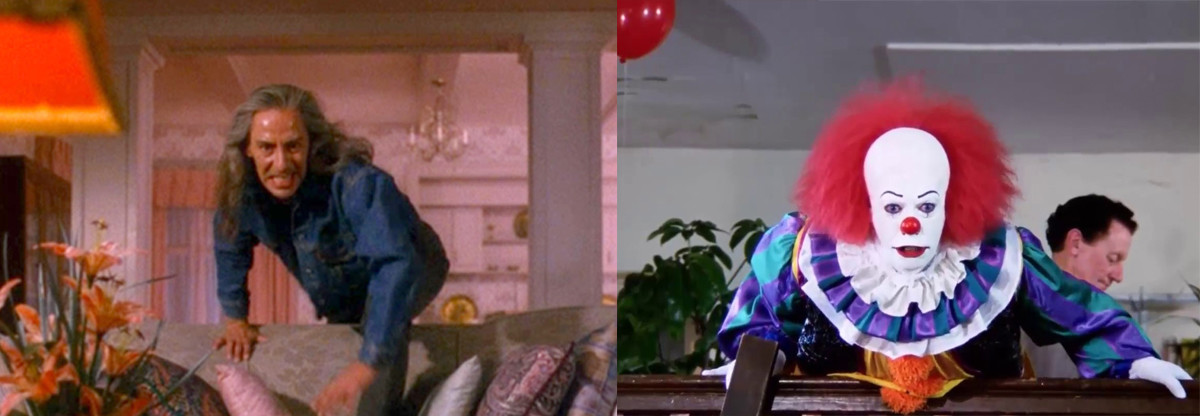
When I first heard of this hypothesis, I thought “there is NO possible way.” However, after reviewing the theory I was shocked at how many similarities there are between Pennywise (Tim Curry and Bill Skarsgard) and “Killer Bob” (the late Frank Silva). Both the classic novel IT and Twin Peaks tell the tale of quiet rural towns that have dark secrets. Pennywise comes from the Macroverse (later named the “Todash Darkness” in The Dark Tower series), a void where unpleasant entities corrupt the endless darkness. Whereas Bob was born from man’s evil when the first atomic bomb detonated. While their origins contradict the theory these two are the same being: Both are born from a place of pure darkness and malice. The Twin Peaks entities reside in a dimension called The Black Lodge where, from what we’ve seen, there are multiple rooms with red curtains and black and white zig zagged floors. Pennywise doesn’t give a full description of his dimension, other than the darkness and deadlights. However, it is possible that the Black Lodge could be a location within the Macroverse.
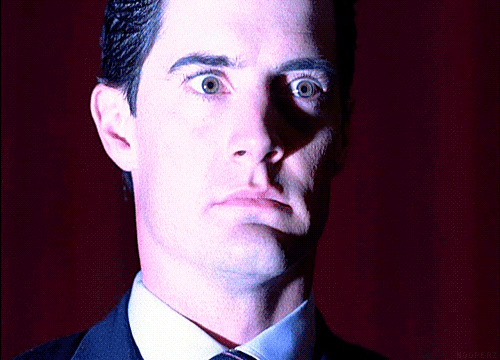
Killer Bob identifies as Bob and Pennywise, at one point in the novel, introducing himself as, “Robert Gray, better known as Pennywise the dancing clown.” So both are Bobs and both have the ability to shift into different creatures as means to terrify, yet stay hidden in plain sight. Bob sometimes manifests as an owl—“The owls are not what they seem”—and Pennywise takes on the final form of a large arachnid. They use these appearances to be comprehensible to the human mind. Pennywise’s true form would render the viewer catatonic. The human brain, while complex, cannot perceive the true form of the interdimensional being. While Bob’s true form can only be seen by Sarah (Grace Zabriskie), in visions, and she loses her sanity throughout season 1 and into season 3. Another parallel.
To survive, both creatures need to feed on fear. Pennywise delights on the fear of children and their flesh as well, “because all the chemicals of fear flooded the body and salted the meat.” Bob also leeches on humanity’s fear and agony which produces garmonbozia—ambrosia to the Black Lodge residents. When not gorging themselves on terror, they are able to infiltrate the human mind due to its fragileness. Killer Bob subtly possesses Leland Palmer (Ray Wise) for years, causing him to molest his own daughter Laura (Sheryl Lee), which eventually leads to her rape and murder by Bob in Leland’s body. Likewise, Pennywise controls bully Henry Bowers (young Jarred Blancard, adult Michael Cole) and influences him to murder his father and to later stab Mike Hanlon (Tim Reid) in 1985. Thanks to the malevolent forces at hand, both Henry and Leland were placed in jail and blamed for the murders that took place in their respective towns.
“…all the chemicals of fear flooded the body and salted the meat.”
My favorite part of the argument is in the symbolism of creation vs. consumption. Pennywise has an enemy in Maturin the Turtle, who created our universe, and Bob battles against his original host Mike (Al Stroble) and his later host Agent Dale Cooper (Kyle MacLachlan). While Mike didn’t create Bob he is his point of creation. When Mike “saw the face of God” he cuts off his arm that brandishes the “Fire Walk With Me” tattoo, which symbolizes he is touched by dark entities. Later Bob goes on to possess Cooper in the season 2 finale and remains to do so in the season 3 revival.
For a cycle of twenty-seven years, Pennywise terrorizes the town of Derry, Maine and each time, a tragedy befalls the town. Such events are the disappearance of 300 of the founders of Derry and the 102 people killed in the Ironworks Factory explosion. The residents of the Black Lodge don’t necessarily have a cycle, however with the conclusion of season 2 Laura’s spirit tells Dale Cooper she will see him again in twenty-five years, thus repeating the loop of Cooper and Mike fighting against evil just as Pennywise continuously returns to battle against Derry.
—
3) Curt was part of the Facility
(Cabin in the Woods)
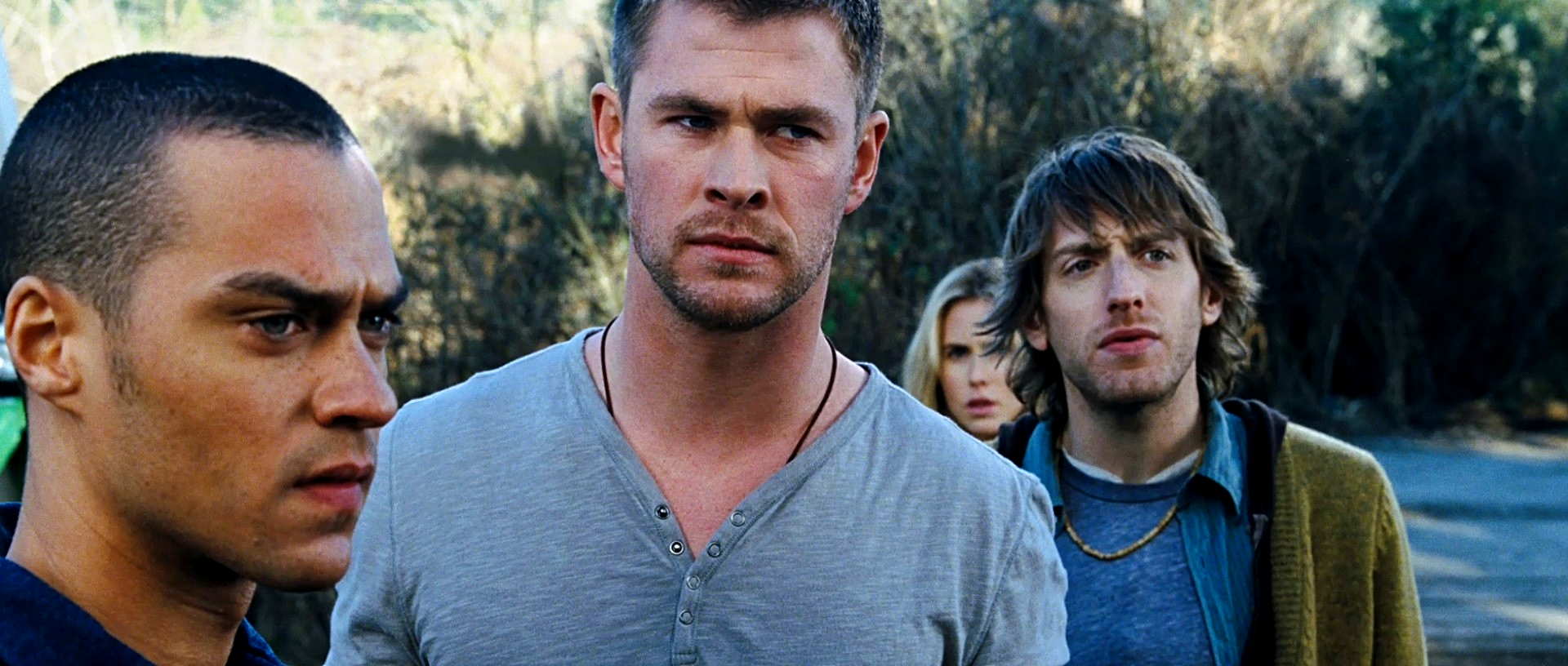
Photo by Diyah Pera - © 2012 - Lionsgate, Inc.
Cabin in the Woods is one of my all time favorite horror movies. Joss Whedon and Drew Goddard did a fantastic job of taking the usual horror movie tropes and turning them on their head—while commentating on how stuck up the cinema audience is with their high expectations and demands for the same tropes over and over. Though, on the surface, it comes off as a film that asks: What if horror movies were part of a greater plan?
The film follows the same old characters such as the jock, the fool, the scholar, the whore, and the virgin. These hormone revved college students decide to spend a weekend at a cabin owned by the jock Curt’s (Chris Hemsworth) cousin. Along the way they meet a creepy, bible thumping gas attendant and discover some odd things about the cabin, like a two way mirror between rooms and a diary containing tragedy that happened in the actual cabin. Eventually they fall victim to a zombie family—excuse me a “zombie redneck family.” As this all happens we are shown an underground facility that is organizing everything. Earlier on, we see how there are other countries that participate and one of them involves pale skinned, black haired Japanese ghosts…like I said, the usual. However, each death has a purpose as an offering to the Ancient Ones who slumber under the Earth’s crust and their amusement is satiated with each sacrifice. If the ritual fails the Gods will take over the world.
“…like lambs to slaughter.”
The theory that comes into play here is: What if one of the college students was in on the plan with the government facility to help ensure the deaths happen. The person most easy to pick out would be Curt—sorry Hemsworth! Let’s start at the beginning. The kids show up at the cabin in the first place, because it is owned by Curt’s cousin. However, it is revealed Curt doesn’t have a cousin. The cabin is owned by the government facility as the place used for the ritual to be complete. The two possible explanations are that the facility had been quietly drugging the kids for some time to alter them for the sacrifice OR Curt was ordered to take them there. Curt was a sociology major according to Marty (Fran Kranz), so it would make sense that Curt accepted an internship at the facility and was being groomed to work there upon graduation. Sociology is the study of human culture and relationships, and their interactions which would make a perfect study. Here, Curt would learn about the true function of human society and how people react when placed in different types of danger, to help better organize the ritual for the following year.

When the group stops for gas (the RV is driven by Curt), at the seemingly abandoned gas station, they are confronted by a rude attendant by the ominous name of Mordecai (Tim de Zarn). This guy insults everyone including Curt’s girlfriend Jules (Anna Hutchison) by calling her a whore. Instead of defending his girlfriend’s honor Curt throws money in the attendant’s face and ushers everyone away. Now, this doesn’t seem that ominous but it could be a checkpoint for Curt to make sure they are running on schedule and Mordecai to keep the showrunners updated. To initiate any conflict would put them behind schedule on the ritual, so the friends are moved along, like Mordecai says, “like lambs to slaughter.”
In regards to the totems in the basement, whoever picks one of them up and “activates it” becomes the culprit in determining which entity will arrive to lead them to their deaths. In the plot’s case, Dana (Kristen Connolly) reads a Latin incantation from the diary of Jules Buckner which awakens the Buckner family to rise from the ground. However, while everyone picks up one object, Curt picks up two. First is the conch of the Merman and the second is a puzzle that resembles the Lemarchand Box owned by the Cenobites in Hellraiser. Curt seems to be pondering as to how he wants his friends to go, perhaps in the least painful way. When deciding between death by being eaten alive by an evil mere-creature or tortured to death by enthused BDSM demons, Dana interrupted his thought by being the one to choose. After this, it is Curt who leads Jules outside in the woods for sex and her eventual death, as it was dictated that the whore has to be the first to die. Therefore, he led her away from her friends so no one can intervene and save her from dying first.
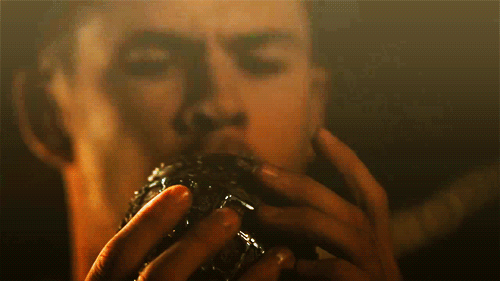
The question that negates the theory is: Why would Curt agree to die? One probable answer is he didn’t know he was going to die and was told he would be the surviving hero of the group. His intensely heroic speech fits this theory as he swore he would return to save his friends with an army before slamming into a giant invisible force field. This ties into why Curt brought one motor bike for a weekend with five friends. He was told by his commanders to offer his friends salvation by jumping the ditch that leads to the road and he would ride away to safety. The other notion is that Curt knew he had to die in order to keep the world safe and, upon seeing how Jules went, he decided that he didn’t want to die the same way. Before they make their escape to the RV, in a panic, Curt tells his friends to stick together before the technicians use their mischievous gas to make Curt change his mind and stick back to the original plan.
Damn it, Thor. Don’t tell me you’re behind “the snap” in Infinity War as well.
—
4) The Purge is a Prequel
to The Hunger Games

Photo by Michele K. Short - © Universal Pictures
This interesting theory is bound to have people shaking their heads, but it is a pretty solid case. Expanding on the probability that The Purge is in the not so distant future where, one night a year, citizens can commit any crime for twelve whole hours without government punishment. The Purge would eventually come to a crashing halt when the working class decided to revolt against it. This is because the higher social class sits comfortably safe during the turmoil. In that timeline, civil war breaks out which makes the government or “Capitol” reaffirm control by sectioning off the survivors into districts. That’s where The Hunger Games comes in. Panem is made up of a capitol and twelve districts, created to keep the poorer citizens in line and the rich people are provided with safety.
Both film franchises have a reoccuring theme of rich vs poor, where the lower class must fight to the death to stay alive while the rich sit on their couches, sipping champagne, in secure facilities. In The Hunger Games the games were created as punishment for a revolution or attempted uprising, which would make sense if the people fought back against the devastating events within the last Purge. The revolution started when District 13 staged a coup against the higher society, so the link is not too far fetched. With the games happening every year, they could be high society reminding the working class of—first the US in The Purge and now Panem in The Hunger Games— that they will always be in control…but we’ve seen how very wrong they are.
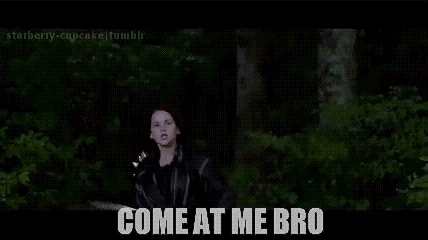
The higher districts seem to be the only ones interested in participating in such a sport, as they train themselves consistently for the games, with the help of the Capitol. This would be the homes of those in support of the Purge and happily induct themselves for a chance to prove their worth to the high class society and that the lower class are dogs meant to be put down. The rich always want to win and cheating is never a faraway thought, so the Capitol places the district 1 & 2 inhabitants in special training programs to continue the oppression of the “weaker” classes. This secures the social class to always be the winner, therefore keeping the Purge/Hunger Games permanently fixed to keep the underdogs down at their masters’ feet.
—
5) Kevin Spacey is a Demon (or the Devil)
and Somerset is an Angel (or God) (Se7en)
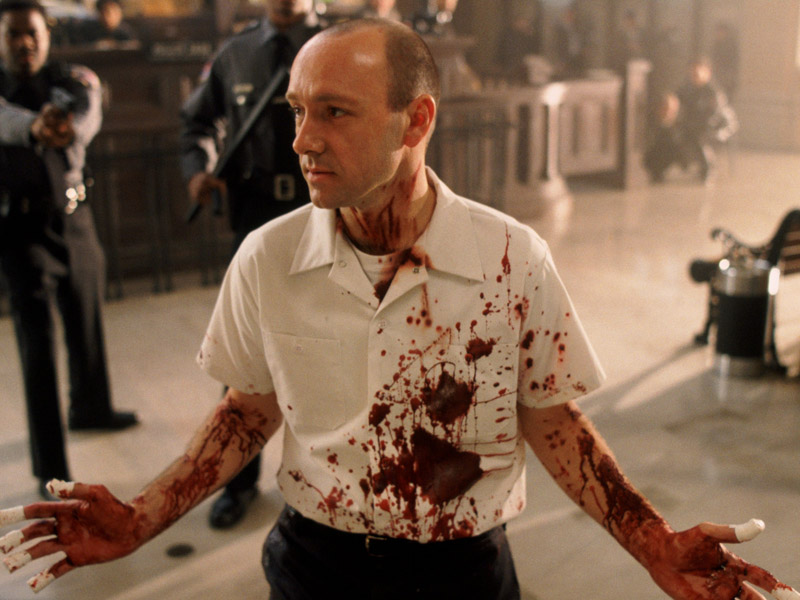
Photo © 1995 - Warner Bros. Entertainment
If you believe this one, it makes an already creepy movie that much more gut wrenching. The film follows Detective Somerset (Morgan Freeman) working on his last case before retirement with his new younger partner Mills (Brad Pitt). Together they attempt to catch serial murderer John Doe (Kevin Spacey), who is using the Seven Deadly Sins as a means to kill his victims. Throughout the case they come across Gluttony, Greed, Sloth, Lust, and Pride. Of course, we all the know the infamous ending (“What’s in the box!?!?”) that has been parodied relentlessly. Doe becomes the victim of Envy and Mills falls prey to Doe’s plan, becoming Wrath and concluding a well rounded horror film on the folly of man.
So, how does this work if Somerset was working with Mills? According to the theory, both Detective Somerset and John Doe were meant to be the literal angel and demon on Mills’ shoulder. This link between these two characters is referenced by the aging detective decorating his desk with air fresheners, which are later found in the Sloth victim’s apartment. This can be seen as a form of taunting of the demon as the case continues. Branching out from this argument, it’s theorized there is a wager between God and the Devil based on the humility of humankind where Somerset and Doe are the ones who influence their selected subjects. Based on Somerset’s grim view of the world and his eagerness to retire, it would seem as though the game has been playing out for quite some time. At first Somerset refuses to be partners with Mills after realizing his innocence with his wife Tracy (Gwyneth Paltrow). He questions why the younger man was transferred to his precinct. This shows the guilt Somerset feels for the impending trauma Mills is about to endure. Taking on a more experienced cop with years of grit behind him would have made the game more bearable but Mills was more like a lamb being led to the wolves.
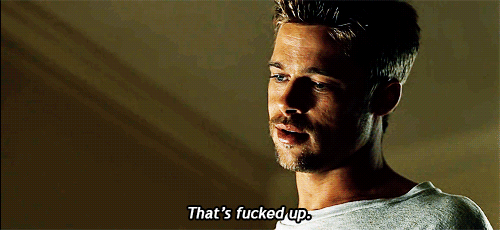
At the final showdown, Doe states how he doesn’t feel remorse for the lives he took and sees it similar to those who died at Sodom and Gomorrah, biblical cities destroyed by God based upon their sins. In the story, three angels were sent to Sodom but one stayed behind while the other two went to investigate the wickedness that plagued the city. This can be symbolic of Mills being the innocent Abraham who is left behind with an angel which tells him of the dangers to come; the angel being his wife who warns him what a terrible place the city is. In turn, Somerset and Doe would be the two other “angels” who hold the fate of the city in their hands. During one scene, Somerset dryly asks Doe if he was doing God’s work. To which Somerset replies deviously, “the Lord works in mysterious ways.” This can be referenced back to Somerset warning Mills that if the man they find turns out to be the Devil it would live up to their expectations.
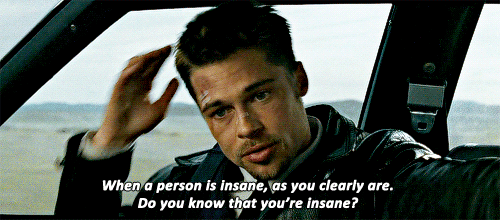
While the detectives are with Doe in the final scenes, they notice a dead dog lying in the middle of a desert road. Somerset points it out and Doe amusingly says it wasn’t him. You can take this as either there just happened to be a dead dog—a marker for them to be found in the open desert—or as the symbol for the death of Somerset and Mill’s partnership. Dogs are symbols of loyalty and guidance; Somerset was a guide to Mills and his protection of his younger partner comes to a crashing halt in the final scene.
“The Lord works in mysterious ways.”
Throughout the film, Doe is the advocate for the less righteous path against ‘the wicked’ whereas Somerset tries to guide Mills into forgiveness and the justice of a higher power. Just as a demon offers a darker path and an angel offers the straight and narrow path. Eventually Doe succeeds in completing his Seven Sins ritual by convincing Mills to shoot him. Therefore, Somerset has failed in his mission of advocating for the goodness in man. During these tense moments, Doe mentions pregnancy and Mills blinks in confusion. To which Doe looks at Somerset and says in a mocking sympathetic voice, “Oh…he didn’t know.” Which implies that once Somerset knows about Tracy’s pregnancy he would tell Mills to turn away from the case for the sake of his family. Instead, this hidden information is the final straw for Mills to shoot Doe point blank. When Mills is arrested, the chief asks Somerset where he will be after this. He replies,“around.” implying that he may be retired
from the game but he will be around to keep his eye on humanity. After all, Doe rigged the ending.


